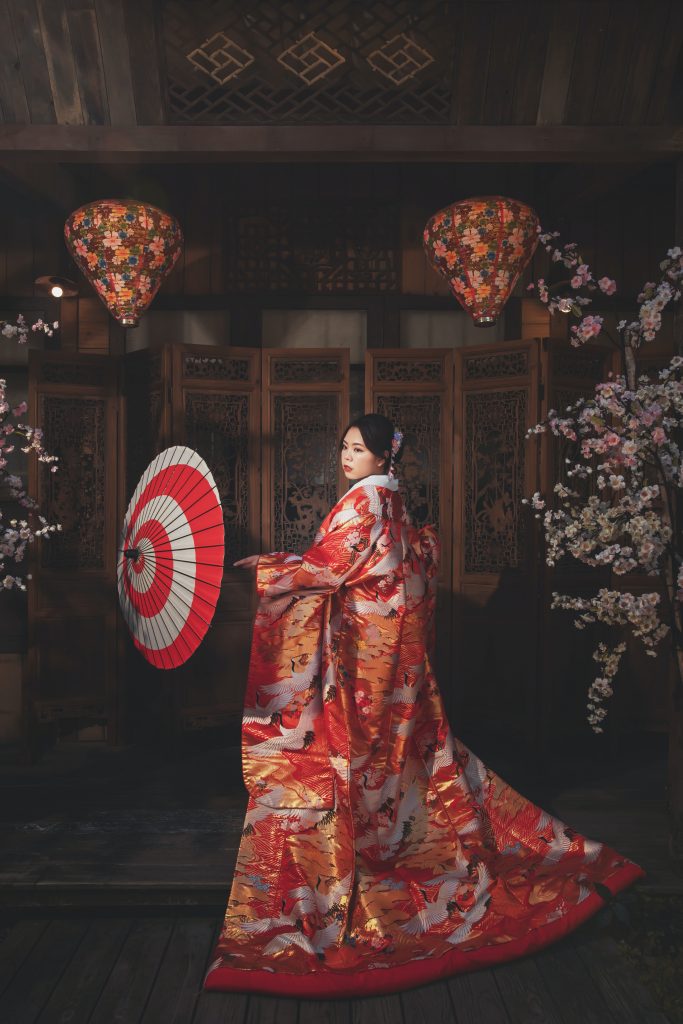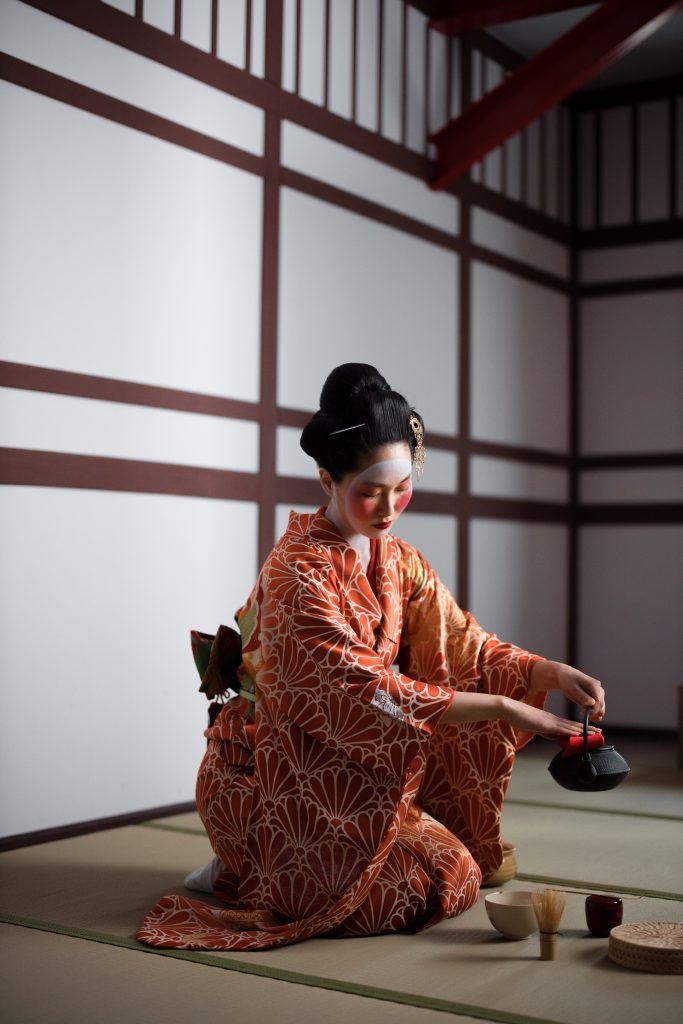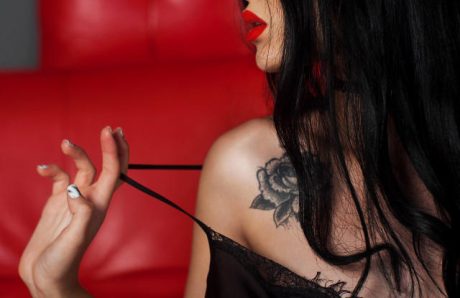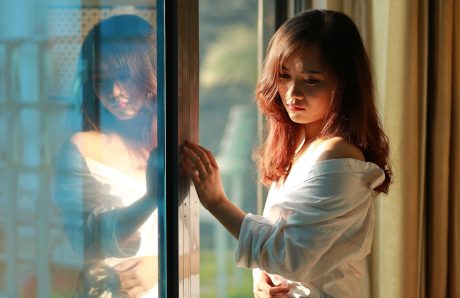
We often tend to associate the geisha with a woman who trades sexual favors. But this is not the case. Her role is far different and far more comprehensive. She practices traditional Japanese arts.

Photo Li Yuan
So, sure, her role is to keep wealthy men company and entertained, just like an escort girl, but she does it mostly for big, special events like prestigious parties. And when we say entertaining, we don’t mean sex. Although their attitude can still be associated with eroticism. Indeed, dance, music, discussion – geishas collect artistic and social qualities. They are distinguished by their refinement, their general culture and their beauty.
While it’s a good idea to socialize with a geisha, being a geisha is a different story. But why? Where do these clichés come from? What does she do these days? Here’s a culture roundup. Yes, even on XloveCam, it happens. There’s nothing incompatible (fortunately) between education and a love of sex!
What does” geisha ” mean ?
The name “geisha” is made up of two characters that can be translated as “art” and “person”. Literally, the word means “person who practices the arts”. So she’s an artist, not a prostitute. She has been trained in the essential arts to entertain her customers, while promoting ancestral traditions. In other words, she has a major role to play in the field of entertainment. To symbolize her strength and delicacy, moreover, she is often associated with the world of flowers and willows (karyūkai).
Where doesthisprofession comefrom?
Yes, we’re talking about a profession here, not an education like our young daughters had not so long ago. The role of muse appeared many centuries ago. The first time was in 794, under the reign of Emperor Kamu, who invited dancers to entertain samurai and warriors. Look, but don’t touch. In any case, the combination of art and entertainment gave birth to the geisha.
The trend then developed during the Edo era in Japan’s ancient capital. Little by little, dancers cultivated other talents such as singing, poetry, classical music and the art of conversation. As a result, they were invited to banquets to serve sake and keep rich men company.
A little thing many people don’t know: the role of geisha was originally played by men (as in the theater, you might say). At least for the first official ones. Many women, called onna geisha, then joined the profession until they became the majority. From 1800 onwards, the profession was reserved for women only.
From then on, the world of geisha became highly codified, with strict rules of conduct. As the world of geisha grew, so did the number of teahouses. At that time, there were hundreds of thousands of geisha practicing this art. By the 19th century, the number had dwindled to around 15,000. After the Second World War, however, they became increasingly rare, and today there are barely 200 of them, mainly in the Gion district.
That’s how we go from tea houses to factories. The war needed little hands. And let’s not forget the role of education! Young girls are now obliged to finish secondary school before taking up this profession. Today, however, there is a renewed interest in this profession, and the number of maiko (geisha apprentices) is growing rapidly.

Photo Ulises Peña
What does a geisha really have to do?
The maiko becomes a geiko (or geisha). From then on, she masters the traditional Japanese arts. And she represents them wherever she goes, as a tribute to her country and its culture. This folklore is always performed with elegance and refinement. If her knowledge and art are mastered, so is her image. With her well-groomed appearance, she presents a perfect aesthetic, with elaborate make-up, an impeccable chignon, a Japanese silk kimono and a fan that she handles with brio.
This Asian artist is a complete performer, demonstrating a certain talent for all things dance, song and music. She can play several instruments, including the shamisen (stringed instrument) and the taiko (drum). She’s also a master of the tea ceremony, games, poetry, calligraphy and the art of conversation. She also has a full head and a great deal of general knowledge. Finally, until the 20th century, the geisha was considered a fashion ambassador.
As you can see, her role is multifunctional and of great importance in Japanese entertainment and culture. They are particularly adept at entertaining you and ensuring that you have a great time in their company. You’ll find them most often in teahouses (ochaya) and restaurants, hosting banquets and entertaining wealthy customers.
Integrated into the circles of influential men and guardians of Japanese customs, they play an important role in society. The profession is highly respected in the Land of the Rising Sun, where the company of a geisha remains a great privilege.
Why are geisha and prostitute confused?
Well, there are roots, it’s true. And in the West, we tend to make this shortcut. And yet, this practice disappeared from the profession in the… 18th century! But the confusion remains.
This is due to several factors. Firstly, geishas and prostitutes shared the same neighborhoods. That is, the kagai, or streets dedicated to pleasure. Like courtesans, they frequented the same tea houses, serving a wealthy clientele. And although sexual favors were not normally expected, they were still possible. During the Edo period, it was common practice to grant such favors, or to sell the virginity of geisha for a high price.
Another point was that some high-ranking, luxury prostitutes tended to wear make-up and dress like geisha. This added to the confusion.
Finally, we can thank the media, which conveyed a false image through various literary and cinematographic works. Memoirs of a Geisha, for example, mixes the roles of geisha and prostitute.
Whatever the case, you can no longer make the mistake today. Prostitution has definitively and completely disappeared from geisha functions.
How are they trained?
Not every girl who dreams of becoming a geisha will be able to fulfill her desire. In addition to a certain natural talent, it takes 5 years of training and a very strict apprenticeship. Of course, they don’t enter geisha houses (okiya) from the age of 6, but they do have to be at least 15 and have completed secondary school.
Meanwhile, geisha students (maiko) learn all the codes of conduct associated with the profession. They study the rules of decorum, the art of dress, make-up, how to stand, move and sit elegantly. Reminds you a little of Miss France? They also learn traditional arts such as dancing, singing, tea service, flower arrangement and literature. At the end of their training, geisha excel in all artistic fields.
Maiko accompany geiko in their daily lives and at their appointments. They maintain a strong bond with their elders and learn to make their place in the closed community of the bourgeoisie.

Photo Cottonbro Studio
A code of conduct
With traditions to respect, geishas can’t just do as they please. They’re not free to go wherever they want, or do whatever they want.
They must live in a geisha house called a flower city okiya (hanamachi) in Kyoto. These houses consist of a mother (okâsan) and several geisha who live under the same roof, sometimes with staff to help with cooking or cleaning. The okasân educates and takes under her wing the young girls during their training.
They also have a specific traditional make-up. White complexion thanks to rice powder (like Japanese masks), red-tinted mouth, corners of the eyes and eyebrows highlighted by a touch of red… You can even sometimes see black-tinted teeth (as in Vietnam), which used to be a sign of beauty. And the more experienced they are, the lighter and more natural the make-up. A small detail, however: a young geisha will only dye her bottom lip red.
When it comes to hairstyles, geisha wear their long black hair up in a traditional bun with pins and floral decorations. Nowadays, however, they often use wigs for added practicality. The hairstyles of experienced geisha are less elaborate than those of maiko.
As for dress, every detail of the outfit reveals the experience and rank of the geisha. Some costumes weigh over 20kg! The maiko wear a colorful traditional kimono with a wide, showy belt (obi), while the geiko wear a more discreet outfit with more sober motifs. Sandals, or geta, have wooden soles of varying thickness. They indicate the rank of the geisha, as do the color of the straps.
During the day, the geisha spends a lot of time taking care of herself and getting ready. And in the evenings, she’ll discreetly make her way to the teahouses.
Where can I meet a geisha?
If you’re ever lucky enough to travel to Japan, you’ll need to be observant. As geisha are rather rare, you may be able to meet one in the Gion district. Otherwise, you can book her services in tea houses, restaurants or hotels. You may need good contacts to do this, as most customers are chosen on the basis of recommendations. Yes, a geisha has to be earned!
It’s also possible to see a geisha show at a public or tourist performance. If the old capital isn’t on your route, you can also catch a glimpse of them in Tokyo’s hanamachi in Asakusa, Shimbashi or the Kagurazaka district, for example.
A high price
Not everyone can enjoy the talents of a geisha. Prices are very high, because it’s a real privilege. You’ll need to reckon with a minimum of 2,000 to 8,000 yen for a show, and three times that for a private performance. You’ll also receive the bill shortly after the event.

Photo Cottonbro Studio
“XLoveCam is not responsible for blog content that is claimed to be written by an external party.”







